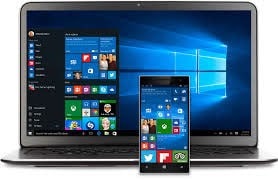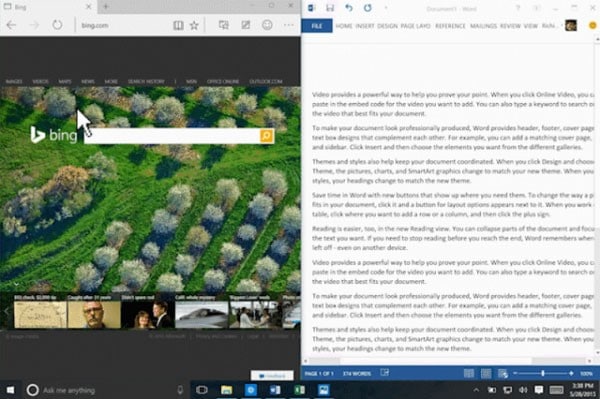With over 75 million computers running Windows 10 since its release four weeks ago, Windows 10 is looking to be the most successful Microsoft operating system in recent memory.
Although is a free upgrade for Windows 7 and 8 users, its features are anything but minor. The Microsoft team integrated the security and speed from Windows 8 with the familiar usability of Windows 7.
Thanks to the integration of touch features, Windows 10 is the default for smartphones and tablets. Windows 10 is simple, with a revamped internet browser and soon-released Office suite.
Menu Changes
One of the most welcome features is the familiar-yet-revamped Start Menu. A simple right click on the Windows 10 Start button leads to to the “secret” Start Menu, which allows access to the Task Manager, File Explorer, Event Viewer, and Control Panel.
 A “Quick Access” tab in the file menu allows users to easily customize and access their most frequently used folders, files, and programs.
A “Quick Access” tab in the file menu allows users to easily customize and access their most frequently used folders, files, and programs.
The Cortana assistant pops up with a push of the Win key, and responds to questions and commands both spoken and typed. Much like Google Now and Siri, Cortana can set alarms, add events, and more when signed into your Microsoft account.
New Internet Browser
Windows 10 takes a step forward Microsoft Edge, its speedy, barebones browser. Edge comes complete with Cortana integration, and allows users to make reading lists without using extensions like Pocket or Evernote. One of Microsoft Edge’s most useful functions for business is the dedicated “Reading Mode” that strips down pages to its core reading content (no more pop-ups, banners, or inter-text ads).
Action Center
Windows 10 takes this popular feature from Windows 8, which allows users to see notifications and alarms from apps (including messages and emails). Simply drag down from the top of the right-hand screen to access the action center. The action center has numerous settings buttons on the bottom bar for further customization.
Multiple Desktops
Instead of having multiple apps open in a single desktop, Windows 10 allows for multiple desktops to function simultaneously. With this, switching between program sets is simple—just press Win-Tab to jump between desktops.
Bonus Features
Ability to open, print, or save a document as a PDF without using a program like Adobe. This low-key, albeit overdue function is a welcome addition for seamless and efficient PDF use.
Continuum
As a cross-device platform Windows 10 offers the ability for touch screen device users switch between touch mode and desktop mode when a keyboard and mouse are connected. Universal apps for touch and desktop use make Windows 10 a more completely integrated operating system.
Snap Assist
For further multitasking usability on tablets and desktop, Windows 10 has a snap view for organizing open programs. Users can drag their chosen window to take up either full, half, or quarter screen.

Windows 10 is primed to be not only a quality operating system, but also work as a holistic service–allowing users to work seamlessly across screens and systems. With these new SaaS-functions of Windows 10, the possibility of complete integration looks pretty good.
Register for our IT/Network newsletter today!
